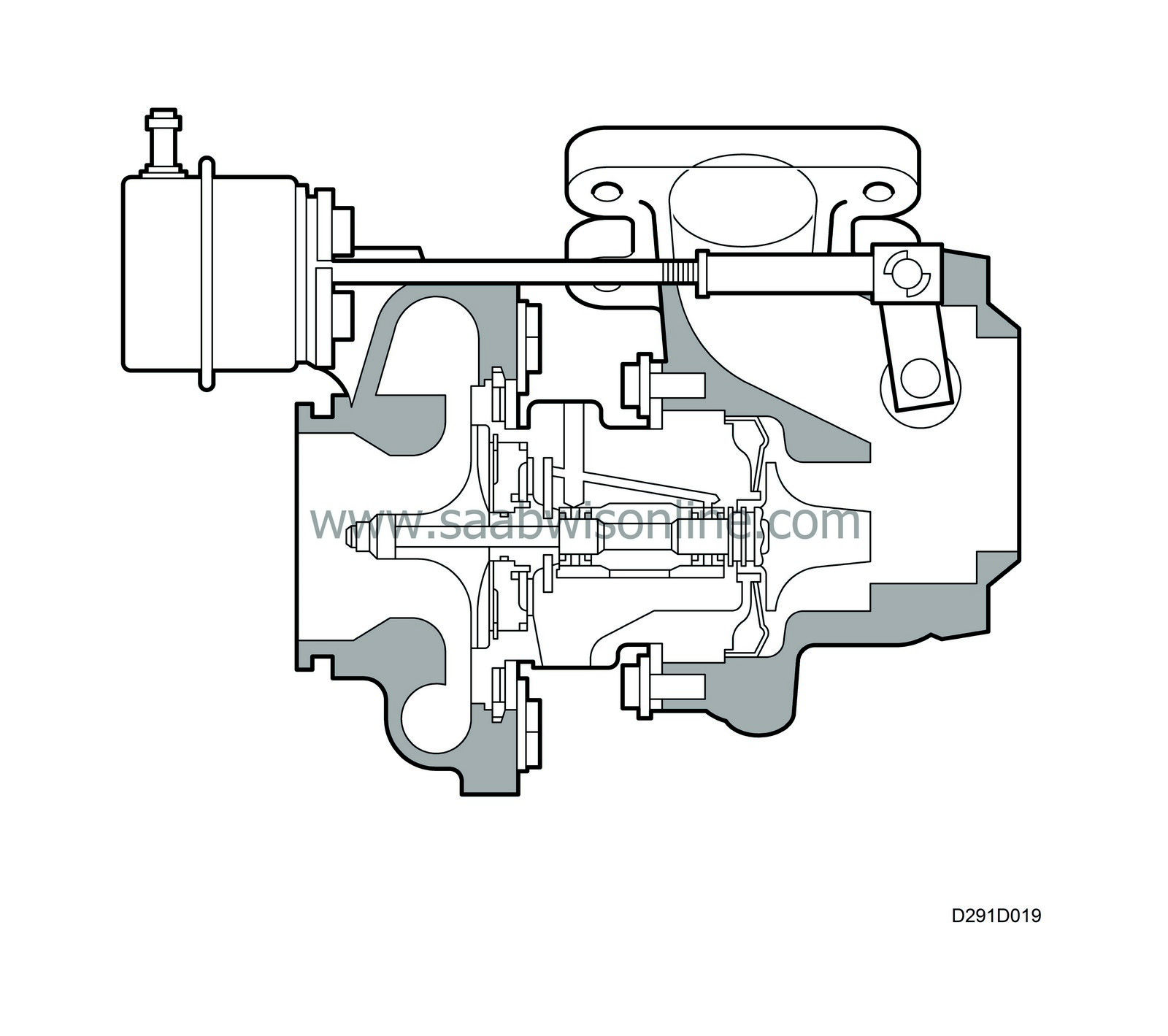Turbo pressure control
| Turbo pressure control |
The turbo pressure in the intake manifold depends mainly on engine speed and load. At higher loads, however, turbo pressure is restricted by the wastegate.
The wastegate is a flap valve that opens or closes the bypass past the turbine.
The flap valve is acted on by a diaphragm box located by the turbocharger housing. The diaphragm box is acted on by the turbocharger pressure and a spring in the diaphragm box closes the flap valve via a rod.
The diaphragm box is controlled by the solenoid valve. The solenoid valve controls the flow of air past the wastegate, having regard to the air mass/combustion ratio, so that it is always in keeping with what is requested.
Under low or normal loads, the wastegate is closed. When the load increases and turbocharger pressure approaches the highest permitted value, the force of the spring is overcome and the valve opens the "bypass", reducing the turbine speed and lowering the pressure.
The pressure is monitored continuously by a pressure sensor connected to the intake manifold by a hose.
For more information see Turbo control and Bypass control valve in Trionic T7.




